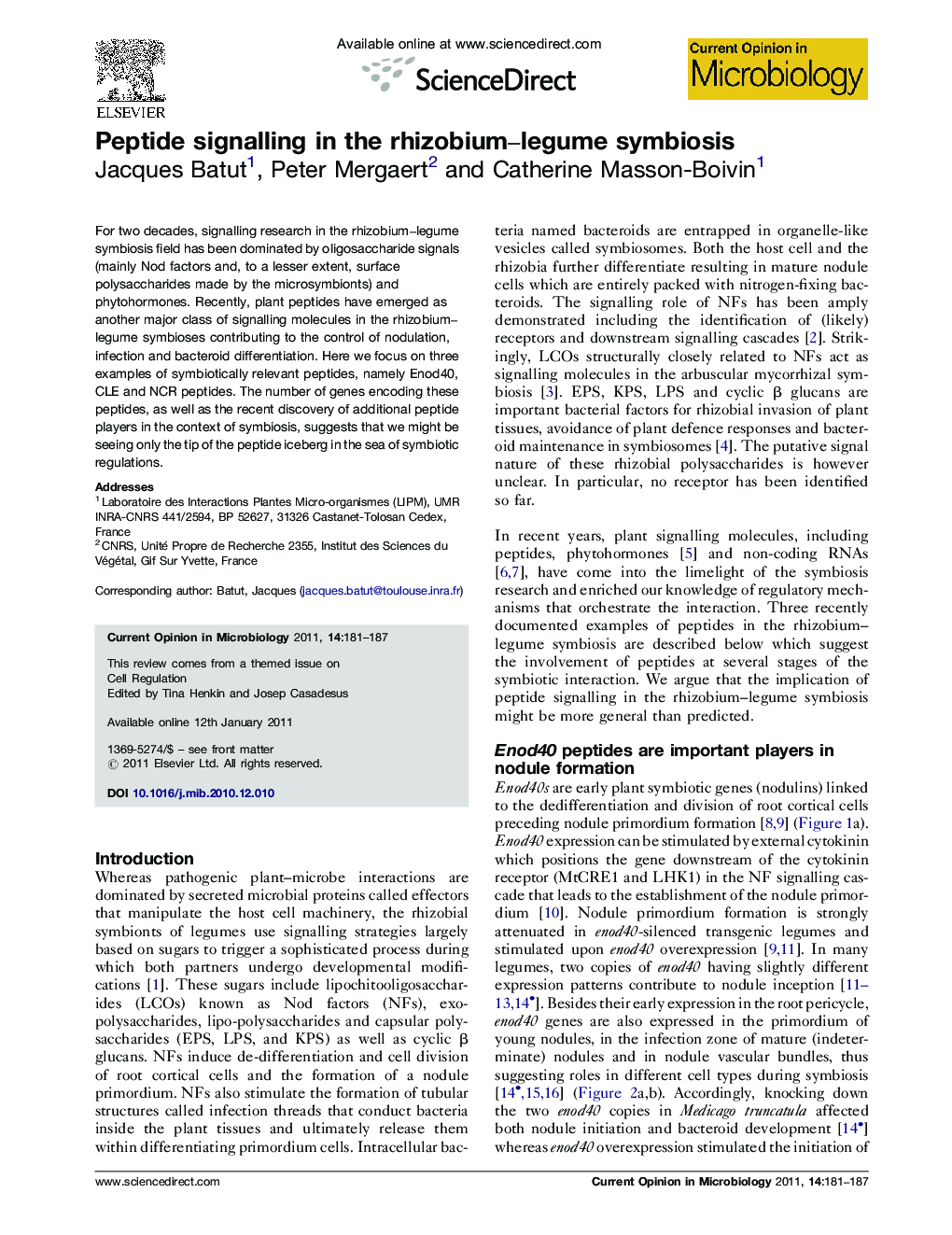| Article ID | Journal | Published Year | Pages | File Type |
|---|---|---|---|---|
| 3399306 | Current Opinion in Microbiology | 2011 | 7 Pages |
For two decades, signalling research in the rhizobium–legume symbiosis field has been dominated by oligosaccharide signals (mainly Nod factors and, to a lesser extent, surface polysaccharides made by the microsymbionts) and phytohormones. Recently, plant peptides have emerged as another major class of signalling molecules in the rhizobium–legume symbioses contributing to the control of nodulation, infection and bacteroid differentiation. Here we focus on three examples of symbiotically relevant peptides, namely Enod40, CLE and NCR peptides. The number of genes encoding these peptides, as well as the recent discovery of additional peptide players in the context of symbiosis, suggests that we might be seeing only the tip of the peptide iceberg in the sea of symbiotic regulations.
